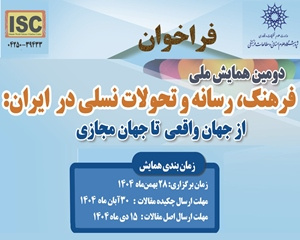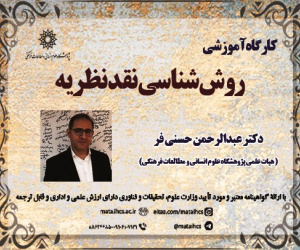تحلیل آمایش نواحی مرزی از منظر جغرافیای سیاسی مرز، مطالعه موردی: نواحی مرزی استان کردستان (مقاله علمی وزارت علوم)
درجه علمی: نشریه علمی (وزارت علوم)
آرشیو
چکیده
آمایش نواحی مرزی در بعد امنیت و توسعه یکی از راهبردهای هر کشوری محسوب می شود. هر کشوری که اهمیت این موضوع را خوب درک کند و با توجه به پارامترهای مؤثر در نواحی مرزی بر اساس اصول کارشناسی و علمی مرزها را مدیریت کند، نتیجه آن امنیت پایدار برای کشور و توسعه در ابعاد مختلف خواهد بود. مرزها محل تولید تهدید و فرصت های متعدّدی محسوب می شوند. کشور ایران با عنایت به مرزهای طولانی اعم از دریایی، خشکی و رودخانه ای با همسایگان مختلف در این مورد یک استثنا است. یکی از مرزهای حسّاس و استراتژیک ایران با توجه به محل زیست قوم کُرد با گرایش های قومی مذهبی متفاوت با هسته کشور و دارای عقبه جغرافیایی در کشور عراق، مرزهای استان کردستان محسوب می شوند. داده های مقاله حاضر، ماهیتی توصیفی تحلیلی دارد و با جمع آوری داده های میدانی و تحلیل آماری داده ها گردآوری شده است. در روش میدانی به وسیله نظرسنجی از 384 نفر از کارشناسان و نخبگان بومی و با استفاده از نرم افزار spss به تبیین شاخص های اثرگذار در تقدّم امنیت بر توسعه در آمایش نواحی مرزی استان کردستان و سپس اولویت بندی شاخص ها پرداخته شده است. نتایج پژوهش با توجه به آزمون t با سطح اطمینان 95 درصد و نتایج حاصل از پرسش نامه نشان می دهد که ترتیب اولویت اثرگذاری عوامل مؤثر بر تقدّم امنیت بر توسعه در آمایش نواحی مرزی استان کردستان به ترتیب شاخص های سیاسی ژئوپلیتیکی، ژئوکالچر، ژئواستراتژیکی و در نهایت شاخص ژئواکونومیکی است که هر یک از این شاخص ها به زیر شاخص های مختلفی تقسیم بندی و سپس اولویت بندی شده اند.The Analysis of Spatial Planning of the Border Regions from the Point of View of the Political Geography of the Border (Case study: Border Regions of Kurdistan Province)
Extanded Border is considered as one of the most sensitive and strategic parameters in political, security and economic life, and in general, in the development process of the countries. Borders are, according to their nature, the points of the flow of goods, thoughts, threats, opportunities, and the focal point of communication with the outside world. Considering the importance of the border, the spatial planning of the border regions in the direction of development and security is always one of the major concerns in any country. The borders of the Middle East and Iran in particular, have always been the locus of conflict, struggle and security problems, due to the ethnical-religious context and the rivalry between the powers of the region. The borders of Kurdistan Province as part of the international borders of Iran are also a part of this puzzle. In the border regions of Kurdistan province, Sunni Kurds live with ethnic orientations, and share the same culture, language and race with the other side of the border, which shows the importance of the border areas of this province. In the border areas of Kurdistan province, we are witnessing the priority of security over development. Border is one of the most sensitive and strategic parameters in political, security and economic life and the spatial development of a country, and it serves as a showcase for the stability and progress of the country. Borders, due to their nature, also contribute to strengthening or weakening national security, national interests and national power. Borders are the locus of the flow of goods, thought, threats, opportunities, and the focal point of communication with the outside world. Considering the importance of the border, the spatial planning of the border regions in the direction of development and security is always one of the major concerns of the sovereignty of any country. The borders of the Middle East in general, and the borders of Iran in particular, have always been the locus of conflict, struggle and security problems, due to the ethnical-religious context and the geopolitical rivalry between the powers of the region. Iran has a long border with its neighbors in the critical zone of Middle East which are unstable in terms of politics, security, defense, and even the land, and there is every chance of the release of these crises inside the country. Iran has a dry and semi-arid climate, inadequate water resources and, consequently, inappropriate distribution of the population and some ethno-religious conflicts between the border areas and the central areas that enhance the sense of divergence and promote authoritarianism. Most of the ethnicities and religions of Iran are located in the border areas, and most of them are geographically expanded on the other side of the border, therefore, border areas are under the influence of security look, and comparing with the center, have a lower development in all aspects. The level of spatial development in Iran follows the center-perimeter pattern. The perimeter of Iran, which is usually the living place of different ethnicities and religions, does not have a desirable level of development, and this underdevelopment has caused the border regions to be always pregnant with more challenges and conflicts. Today, given the new political situation and the rivalry of the powers in the region, we see widespread threats in the border regions of Iran that have led to a security approach toward the spatial planning of the border regions, and the mere security approach has exacerbated the underdevelopment and the reproduction of security problems in those areas. The border areas of Kurdistan province are a part of this puzzle, considering that all of these harmful factors are found there, and in these areas, like most of the country's border areas, the security approach and the priority of security over development are dominant. In the border regions of Kurdistan province, Sunni Kurds live, and share the same culture, language and race with the other side of the border, which shows the importance of the border areas of this province. The main question of the research is that what factors have led to a security approach in the spatial planning of the border regions of Iran in general, and Kurdistan province in particular? The research findings indicate that political, geo-cultural, geostrategic and geo-economical indices are generally effective in the spatial planning of Iranian border regions, and in each province of the country, according to the type of border and the human conditions, the importance and priority of these factors and their sub-indices are variable. In the security approach towards the spatial planning of Kurdistan province, these factors have the following impact priorities: first, the political factor (including the political underdevelopment in Iran, the pale political participation in the border areas of Kurdistan province, the centralized form of governance in Iran, the activities of counter-revolutionary parties in the border areas of Kurdistan province, the history of Kurdish movements and the lack of use of local elites in the management of the border areas of Kurdistan province), second, the geo-cultural factor (including language, religion, ethnicity, the bolstering of the role of ethnic groups in the age of globalization, local customs and the non-conformity of the borders of the province with ethnical-cultural borders), third, the geostrategic factor (including the military presence of the world powers near the border areas, the political rivalries of the regional powers, the phenomenon of terrorism in the region, the condition of the Kurds in the region and the vacuum of the power of the neighboring countries of Iran near the borders of the Kurdistan province), and finally, the geo-economic factor (including the smuggling of goods in the border areas of Kurdistan province, the imbalanced economic development in the borders of the province with the borders of the Kurdistan Region and the deficiency of resources in the border areas of Kurdistan province) are effective on the security approach toward the spatial planning of the border regions of Kurdistan province.






